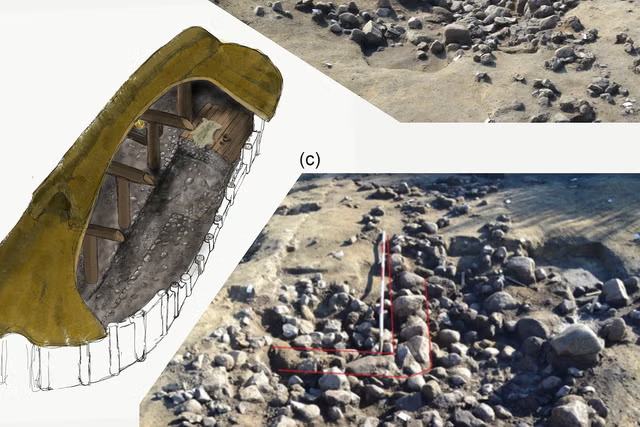A new sunspot forming on the surface of the sun might be about to fling solar flares in our direction.
The sunspot, named 3856, is facing Earth and has developed a volatile type of magnetic field known as a "beta-gamma-delta" field, meaning that it has a greater chance of releasing powerful solar flares.
According to National Oceanic and Atmospheric Administration forecasts, there is an 80 percent chance of the sunspot producing an M-class solar flare on October 17 and a 20 percent chance of an X-class flare.
On October 18, there is a 75 percent chance of M-class flares and a 15 percent chance of X-class flares.
"Solar activity is expected to be moderate to high due to occasional M-class flares (R1-R2, Minor-Moderate) on 17-18 Oct, dropping to likely on 19 Oct. There is a slight chance for X-class flares (R3, Strong) through 18 Oct," NOAA's Space Weather Prediction Center said in a three-day forecast.
Solar flares are flashes of ultraviolet and X-ray radiation released from active areas of the sun's surface, usually sunspots. They are classed by power on a scale of A, B, C, M, and X-class, where X is the most powerful. X-class flares are 10 times stronger than M-class flares, and M-class is 10 times stronger than C-class.
These flares can trigger radio blackouts across sections of Earth's surface because of their interaction with the planet's ionosphere.
Sunspots are regions on the sun's surface that are cooler and darker than their surroundings, and they are associated with intense magnetic activity. The magnetic classification of a sunspot refers to the complexity and configuration of the magnetic fields within the sunspot group, which indicates the likelihood of solar flares or coronal mass ejections.
Beta is the simplest classification, where the sunspot group has two main magnetic polarities (positive and negative) separated by a single line. Gamma indicates a more complex magnetic field, where positive and negative polarities are mixed within the sunspot group without a clear line of separation between them. This complexity can make the region more unstable and prone to erupting with solar flares.
In a delta classification, there are regions of opposite magnetic polarity within a single sunspot umbra—the dark central part of the sunspot. This is a particularly unstable configuration and is associated with a high likelihood of strong solar flares, including X-class flares.
"Generally, the beta configuration is the simplest, least complex configuration, which consists of two clearly separated spots of opposite magnetic polarities. These are usually stable and least prone to erupt as a flare. A gamma region has a more complex distribution. A delta region has the two opposite polarity spots squeezed together, which are known to be highly unstable," Dibyendu Nandi, the head of the Center of Excellence in Space Sciences India and a professor at the Indian Institute of Science Education and Research in Kolkata, told Newsweek.
This sunspot having a beta-gamma-delta magnetic field means the sunspot group has a mixed magnetic polarity (beta-gamma) with no clear separation between polarities and areas where opposite polarities exist within the same sunspot umbra (delta), indicating strong magnetic tension and instability.
"A combination of all of these properties makes it unstable to flaring activity. This may also lead to more disruptive solar storms known as coronal mass ejections," Nandi said.
More powerful solar flares are more common during the sun's solar maximum, which we have entered, NASA and NOAA announced Wednesday. There are about 175 flares of X1-class or higher per 11-year solar cycle, but only about eight flares stronger than X10-class during the same period.
Only 12 flares more powerful than X10-class have ever been recorded. The most powerful solar flare of this solar cycle so far occurred on October 3, hitting X9.0-class in strength.
"The amount of energy in an X-class flare can sound scary, but the true impact for us on Earth depends very much on a number of factors," Alan Woodward, a space weather expert and professor of computer science at the University of Surrey, in England, previously told Newsweek.
"Some give comparisons of the 'Carrington Event' in 1859, which is thought to have released more power than millions of the largest nuclear bomb ever exploded on Earth," Woodward said. "However, the chances of a flare affecting the Earth are lessened because the flares pop out in all directions, decreasing the chance of them hitting Earth."
Do you have a tip on a science story that Newsweek should be covering? Do you have a question about solar flares? Let us know via science@newsweek.com.
Disclaimer: The copyright of this article belongs to the original author. Reposting this article is solely for the purpose of information dissemination and does not constitute any investment advice. If there is any infringement, please contact us immediately. We will make corrections or deletions as necessary. Thank you.



